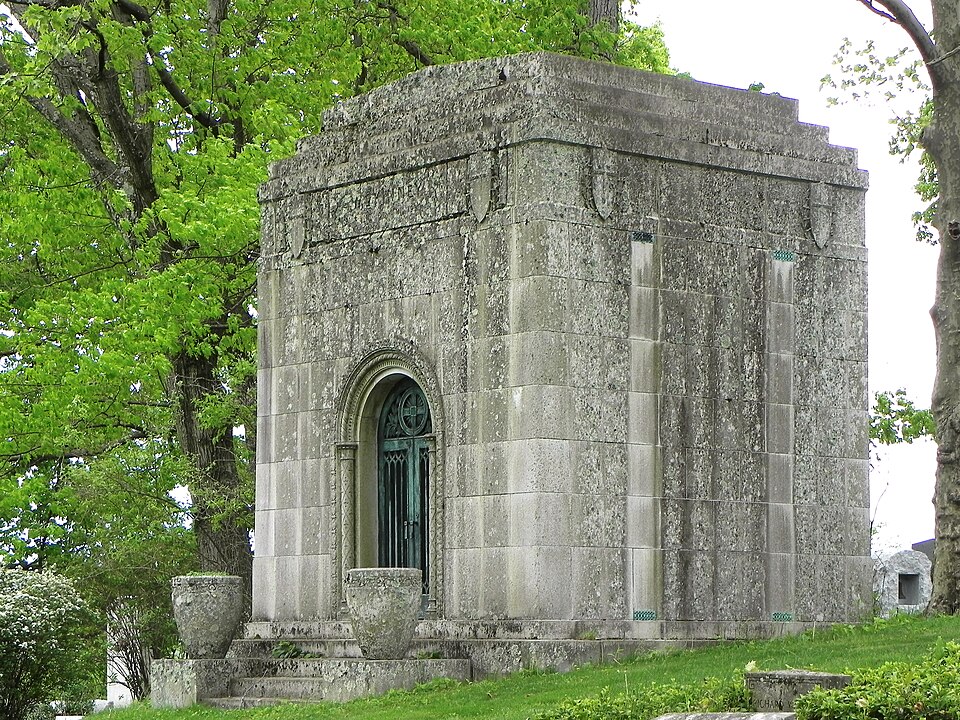
Built in 1930, this mausoleum combines surprisingly disparate elements—Romanesque, Egyptian, Renaissance, and even Art Deco—and makes a harmonious whole out of them.
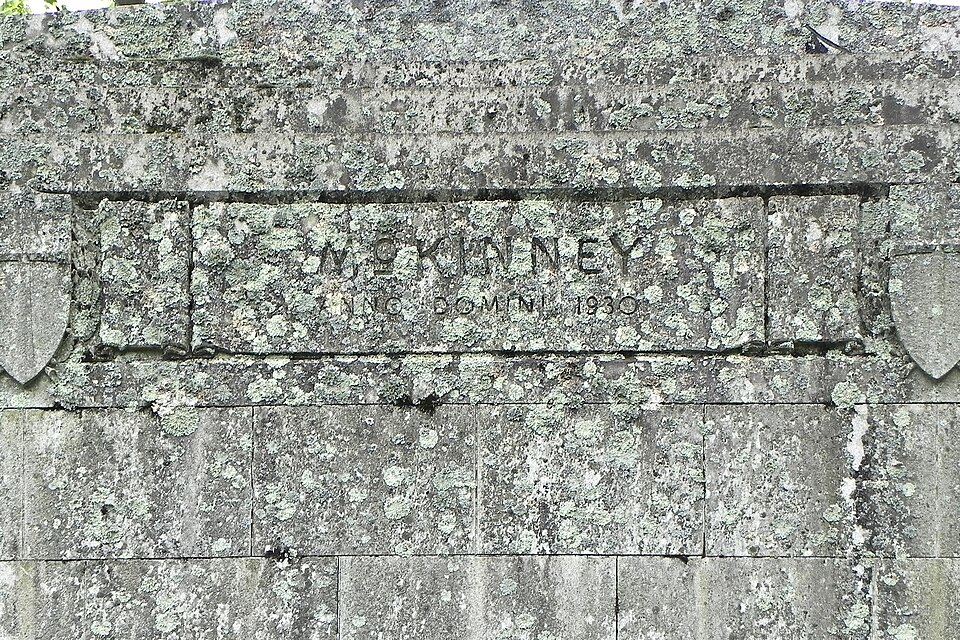
It would be hard to improve on this lush growth of lichens for picturesque effect.
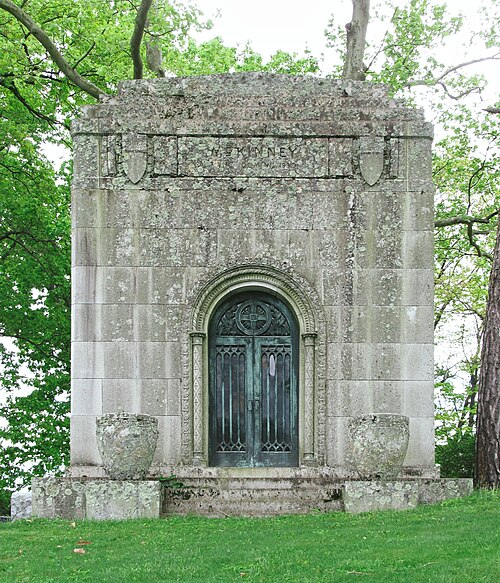
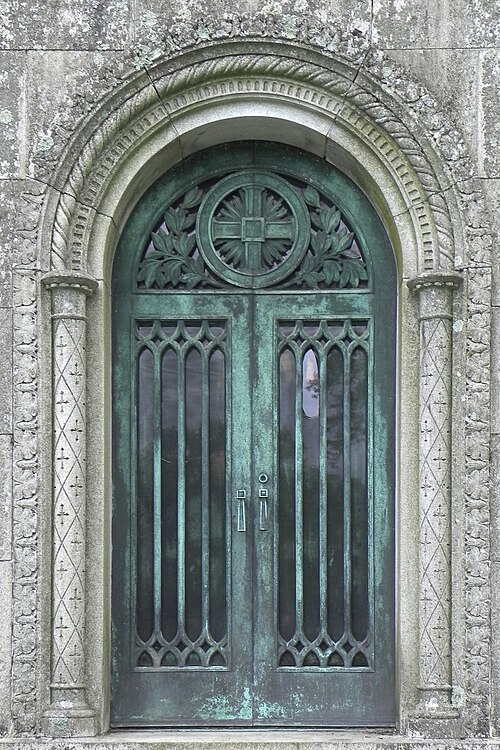
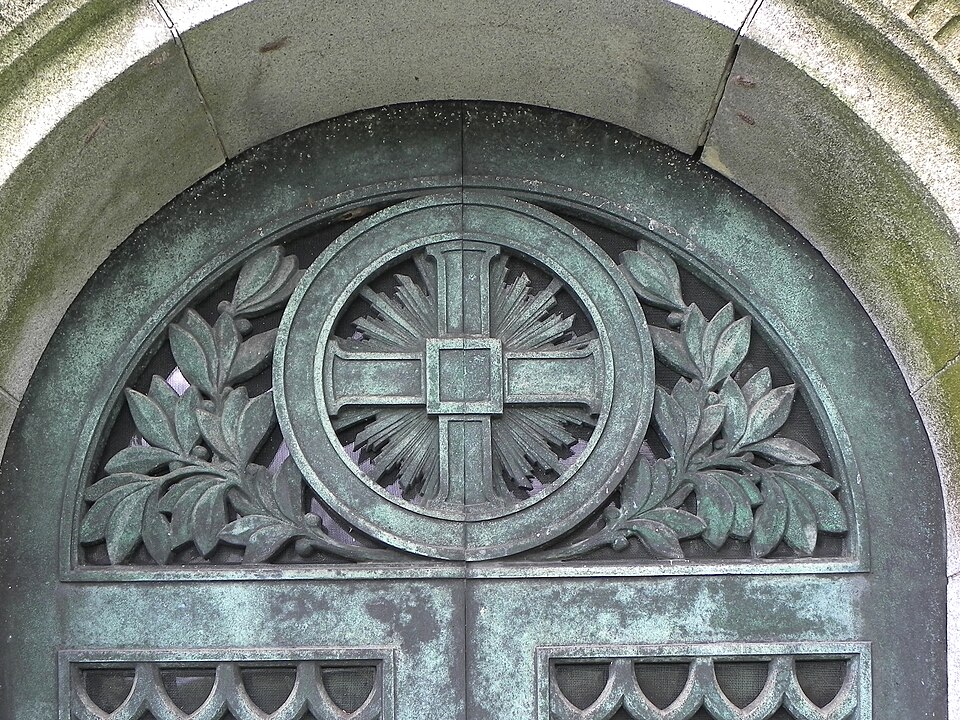
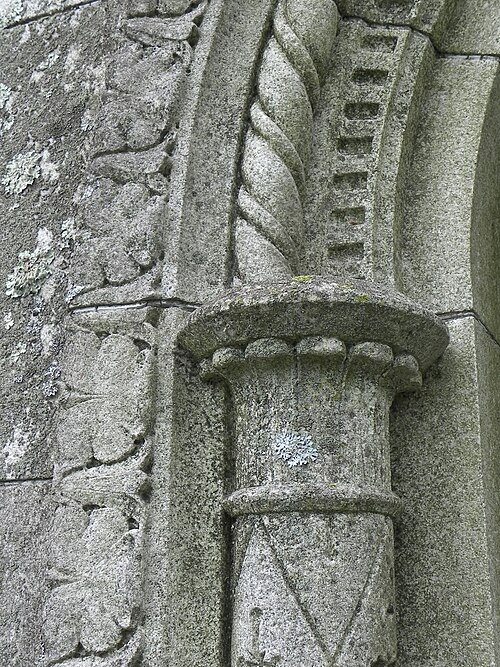
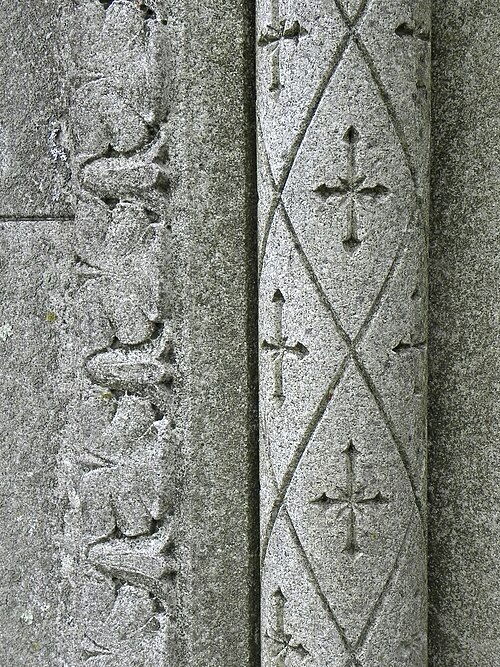




The extra width gives the mausoleum room for more inmates, but it does not seem to have been worked into the design well. It looks as though the Franks and Klees ordered a standard Doric temple, quite correct in its proportions, and then as an afterthought added wings.
The stained glass is very pretty.


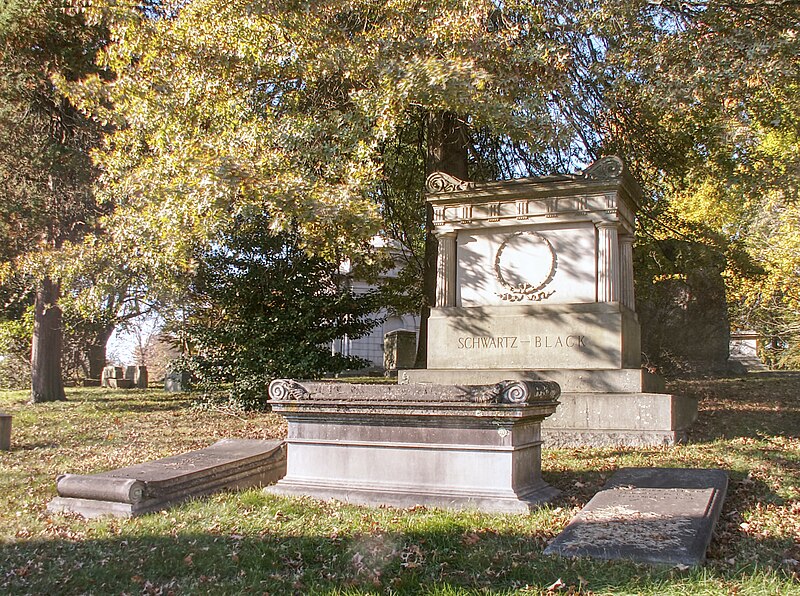
Here is a family plot that seems laid out for ancestor-worshiping rituals. The massive classical monument dominates the plot from the rear; in front of it is a classical altar where the descendants could kneel and offer their sacrifices. The older members of the family are named Schwartz; at about the time of the First World War, the younger ones adopted the easy Americanization of Black.
